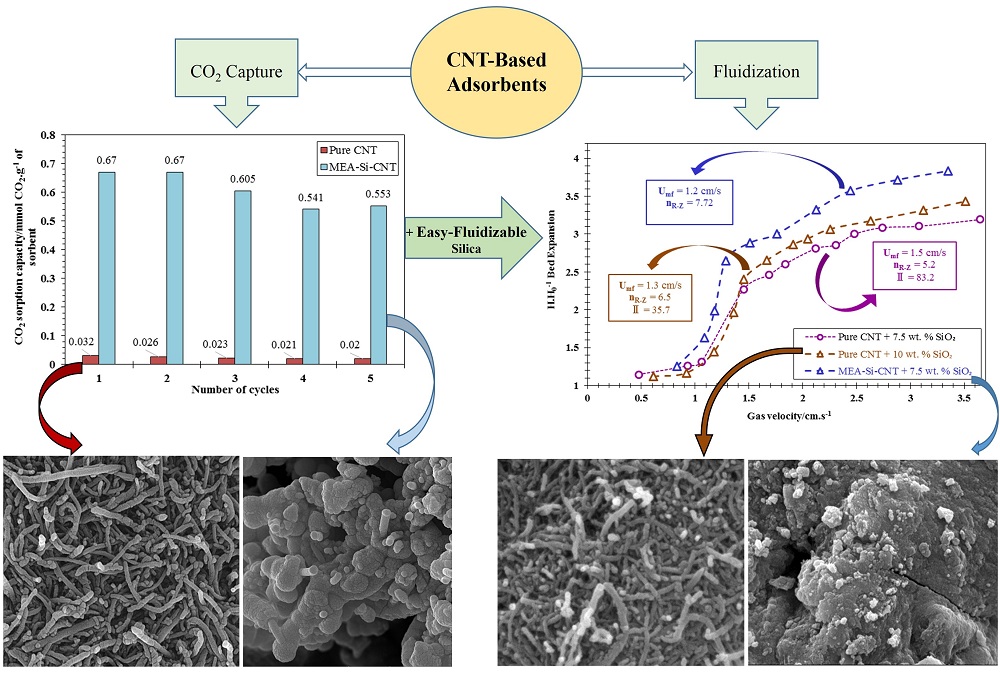To limit the CO
2 emissions which arise from the burning of large volumes of fossil fuels to satisfy the increasing energy demand, significant efforts and investigations have been devoted to developing CO
2 capture and storage technologies [
1,
2]. Among all the proposed alternatives, e.g., membrane [
3], absorption [
4], adsorption [
5], etc., the development of promising solid sorbents, e.g., zeolites [
6], MgO [
7], alkali-based [
8], carbon nanotube (CNT) [
9], CaO [
10], metal-organic frameworks [
11,
12], etc. with good adsorption/regeneration and superior regeneration properties has received more attention recently as a potentially inexpensive technique. CNTs are sufficient candidates owing to their fluffy tubular structure, large surface area, high thermal and chemical stability, unique pore structure, high mechanical strength, low-temperature adsorption and regeneration, and promising performance in prolonged cycling [
13]. In this regard, CNTs have been reported as appropriate candidates for CO
2 sorption processes. For instance, 22.7 mg of CO
2 were adsorbed on the surface of 1 g raw CNT, demonstrating the significant capability of CNTs to adsorb CO
2 [
14]. To strengthen the CO
2 affinity of CNTs, they are usually modified with amino-containing compounds to increase the alkaline group content on the surface and then reach high CO
2 capture levels. According to the study by Lu et al. [
14], the CNTs possess the highest adsorption capacity of CO
2 under the same test conditions compared to zeolites and granular activated carbon after amine functionalization. The modification of pure CNT with monoethanolamine (MEA) resulted in an 18.5% increase in the equilibrium amount of adsorbed CO
2 compared to raw CNT. Recent research indicated that adding 70 wt% silica to pure CNT grafted with 20 wt% polyethylenimine resulted in a CO
2 uptake of 84.48 mg·g
–1 of sorbent. It was a 10.9% increase compared to the similar sample without silica in the structure [
13]. This demonstrates the effectiveness of silica addition to boost the performance of amino-containing CNT-based sorbents for CO
2 adsorption via decreasing agglomeration. Morphology and surface modification of nanoparticles (NPs) via incorporation into additives to diminish agglomeration and improve characteristics has been widely evaluated [
15–
17].













